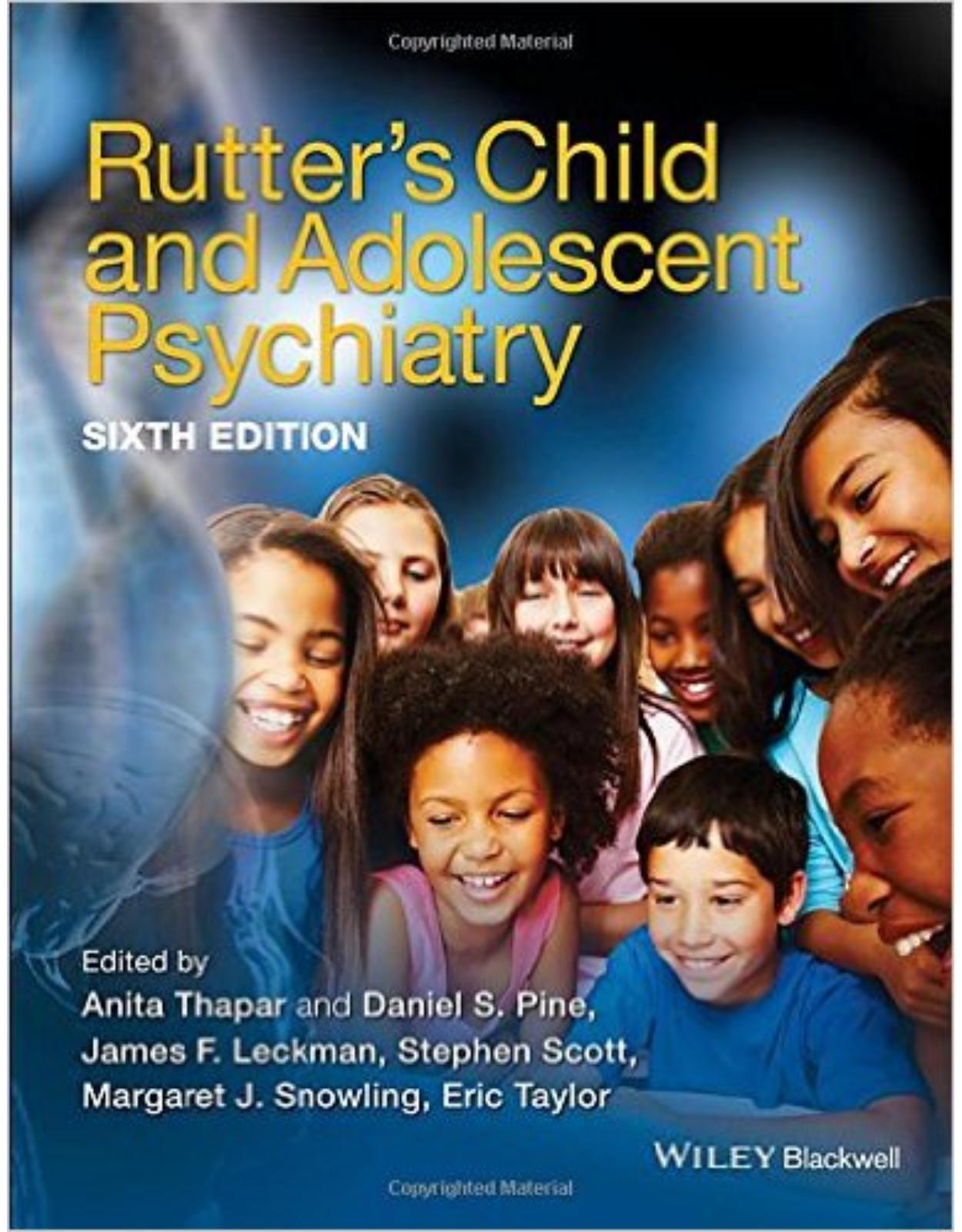
Rutter’s Child and Adolescent Psychiatry 6th Edition
Livrare gratis la comenzi peste 500 RON. Pentru celelalte comenzi livrarea este 20 RON.
Disponibilitate: La comanda in aproximativ 4 saptamani
Editura: Wiley-Blackwell
Limba: Engleza
Nr. pagini: 1104
Coperta: Paperback
Dimensiuni: 21.59 x 4.57 x 27.43 cm
An aparitie: 6 edition -15 Dec 2017
Description:
Rutter's Child and Adolescent Psychiatry is the leading textbook in its field.
Both interdisciplinary and international, it provides a coherent appraisal of the current state of the field to help researchers, trainees and practicing clinicians in their daily work. Integrating science and clinical practice, it is a comprehensive reference for all aspects of child and adolescent psychiatry.
New to this full color edition are expanded coverage on classification, including the newly revised Diagnostic and Statistical Manual of Mental Disorders (DSM-5), and new chapters on systems neuroscience, relationship-based treatments, resilience, global psychiatry, and infant mental health.
From an international team of expert editors and contributors, this sixth edition is essential reading for all professionals working and learning in the fields of child and adolescent mental health and developmental psychopathology as well as for clinicians working in primary care and pediatric settings.
Michael Rutter has contributed a number of new chapters and a Foreword for this edition: "I greatly welcome this new edition as providing both a continuity with the past and a substantial new look."
--Professor Sir Michael Rutter, extract from Foreword.
Reviews of previous editions:
"This book is by far the best textbook of Child & Adolescent Psychiatry written to date."
--Dr Judith Rapoport, NIH
"The editors and the authors are to be congratulated for providing us with such a high standard for a textbook on modern child psychiatry. I strongly recommend this book to every child psychiatrist who wants a reliable, up-to-date, comprehensive, informative and very useful textbook. To my mind this is the best book of its kind available today."
--Journal of Child Psychology and Psychiatry
Table of Contents:
Part I : Conceptual issues and research approaches
A: Developmental psychopathology
Chapter 1: Development and psychopathology: a life course perspective
Introduction
Methodological considerations
Childhood–adulthood continuities
Long-term effects of early experience
Conclusions
References
Chapter 2: Diagnosis, diagnostic formulations, and classification
Introduction
Definition
Clinical and research classifications
Biomarkers and neural signatures
Dimensions and categories
The supposed separateness of syndromes
Validation of diagnostic categories
“Lumping” or “splitting”
Threshold for diagnosis
Separate classifications in different countries
Staging or severity of disorders
References
Chapter 3: Neurodevelopmental disorders
The classification of neurodevelopmental disorders
Concepts of maturational lag and of plateaus in developmental progress
Concept of comorbidity and patterns of co-occurrence within the group of neurodevelopmental disorders
The co-occurrence of different neurodevelopmental disorders due to shared risks and biological characteristics
Sex differences
Does neurodevelopmental impairment have the same meaning in all disorders?
Clinical value of neurodevelopmental impairment concepts
Acknowledgments
References
Chapter 4: Conceptual issues and empirical challenges in the disruptive behavior disorders
The scope of this chapter
What is the phenotype?
The starting point: well-replicated findings
What do we need to explain?
Unraveling risks for disruptive behavior problems
Peer influences
Sex differences
“Comorbidity”
Adolescent onset of disruptive and antisocial behaviors
Conclusions
References
Chapter 5: Emotion, emotion regulation and emotional disorders: conceptual issues for clinicians and neuroscientists
Terms and definitions
Basic emotions
Emotion regulation
Emotion and development
Disorders of emotion and emotion regulation: boundaries to normality, relation to basic science, and other challenges
Emotions and treatment
Conclusion and outlook
References
Chapter 6: Attachment: normal development, individual differences, and associations with experience
Historical context of the development of attachment theory
Infant attachment quality
Individual differences
Links between infant attachment and later outcomes
Assessments of attachment beyond infancy
Attachment and neurobiology
Attachment among fathers
Attachment among atypical populations
Attachment and interventions
Future directions
Conclusions
References
Chapter 7: Infant/early years mental health
Introduction
Risk and protective factors
Special features in assessing infants
Common problems versus pathways to psychopathology
Special features of interventions in infancy
Conclusion
References
Chapter 8: Temperament: individual differences in reactivity and regulation as antecedent to personality
Introduction
Definitions and conceptual distinctions between temperament and personality
Approaches to the study of temperament
Assessment of temperament
Genetic origins of temperament
The temperament of behavioral inhibition
Temperament and adjustment
Behavioral inhibition: temperament or psychopathology?
Future directions in temperament research
Final comments
References
B: Neurobiology
Chapter 9: Neurobiological perspectives on developmental psychopathology
Introduction
Key issues in developmental neurobiology
Human structural brain development
Key features of postnatal development
Oscillating rhythms
Resting activity and network connectivity
Determinants of cortical specialization
Human functional brain development
Atypical human neurodevelopment
Risk
Resilience
Future directions
Definitions
Acknowledgements
References
Chapter 10: Systems neuroscience
Introduction
Child psychiatry and systems neuroscience
Cognitive control
Fear
Attachment and affiliation
Brain development
Conclusion
References
Chapter 11: Neuroimaging in child psychiatry
Introduction
Overview of neuroimaging techniques
Analysis and interpretation of imaging data
Conclusions
References
C: Epidemiology, interventions and services
Chapter 12: Using natural experiments and animal models to study causal hypotheses in relation to child mental health problems
Introduction
Why natural experiments are useful
Natural experiment designs used to test causal hypotheses on environmental risks and that control for genetic contribution
Natural experiment designs that aim to remove or reduce selection or allocation bias in defined populations
Statistical methods to reduce selection biases and confounders
Experimental manipulation in humans
Animal models to test environmental influences
Animal models to study the causal effects of genetic risks
Behavior-based animal models to study causal risks in relation to multifactorial psychiatric disorders
A wide variety of animal species can inform causal research in psychopathology
Conclusions
References
Chapter 13: Using epidemiology to plan, organize, and evaluate services for children and adolescents with mental health problems
Introduction
Why bother?
Overview of key methodological issues
Interpreting epidemiological data
What is need?
What can epidemiology tell us about levels of need?
What can epidemiology tell us about planning to meet need?
Service use now
What factors predict access?
Using epidemiology to determine organization
Using epidemiology to determine funding arrangements
Using epidemiological data to understand outcomes of treatment for teams and services
Conclusion and further directions
Acknowledgments
References
Chapter 14: Evaluating interventions
Introduction
The fundamental principles
Alternatives to RCTS?
Effect sizes. Not P-values
Exploratory activities, pilot studies, and RCTS
Formulating the hypothesis
Designing the RCT
RCT execution/fidelity
Primary analysis and presentation of results
Moving the frontiers: exploration of RCT data
Completing the cycle: meta-analysis
Discussion
References
Chapter 15: What clinicians need to know about statistical issues and methods
Common misunderstandings, study design, multiple testing, meta-analysis and the natural history of “findings”
Confounding, selection and randomization
Adjustment for measured confounders: regression and the generalized linear model
Mechanisms and statistical interactions and effects scales
Longitudinal data analysis
Measurement error, latent variables and growth models
Causal analysis
Missing data
Screening, diagnosis and misclassification
Reporting results
Conclusions
References
Chapter 16: Global psychiatry
Introduction
Context heterogeneity
Methods in global child and adolescent psychiatric epidemiology
Challenges and opportunities
Future perspectives
References
Chapter 17: Prevention of mental disorders and promotion of competence
Epidemiology and the rationale for preventive interventions
The role of developmental theory in the prevention of MEBDs
Defining prevention
Empirical advances in prevention research with children and families
Key issues in current prevention research
Dissemination, implementation and sustainability; Type 2 questions
Conclusion
References
Chapter 18: Health economics
Introduction
Costs in childhood
Costs continuing into adulthood
Cost-offset considerations
Exploring cost-effectiveness
Conclusion
References
Chapter 19: Legal issues in the care and treatment of children with mental health problems
The universality of human rights
The different roles of the mental health professional
Intervening against the parents
Intervening against the child
Expert witnesses
Conclusion
References
Chapter 20: Children's testimony: a scientific framework for evaluating the reliability of children's statements
Outline of present case involving allegations of sexual abuse
Research findings/major principles
Scientific analysis of the facts of the case
References
Chapter 21: Residential and foster care
Introduction
Residential care
Foster care
Assessment
Intervention
Conclusions
Acknowledgments
References
Chapter 22: Adoption
Contemporary trends in adoptive family formation
Alternatives for individuals and families who want to adopt
Gay and lesbian adoption
Opening the birth records: search for birth parents (including ART donors)
Outcomes of adoption
Selection, preparation, and assessment
Postadoption services
Conclusions and future directions
References
Part II: Influences on psychopathology
Chapter 23: Biology of environmental effects
Introduction
Prenatal experiences
Postnatal maltreatment
Institutional deprivation
Social disadvantage
Enrichment and deprivation studies
Experience-expectant effects
Pollutants
Traumatic brain injury
Biological effects of different therapeutic interventions
Gene–environment interaction (G × E)
Overall conclusions
References
Chapter 24: Genetics
Introduction
DNA, genes and chromosomes
Genetic variation and its detection
Relating Genes to Behaviors
Approaches to gene discovery
Summary: recent findings and changing conceptions
References
Chapter 25: Epigenetics and the developmental origins of vulnerability for mental disorders
Parental influences
Epigenetics
Maternal regulation of stress reactivity in the offspring
The human early environment and DNA methylation
Tissue specificity: DNA methylation in blood and brain
The molecular definition of gene × environment interaction
Methodological considerations in studies of epigenetics
Summary and concluding remarks
References
Chapter 26: Psychosocial adversity
Introduction
Conceptual issues in the effects of psychosocial adversity on children
Empirical findings on distal risk factors
Empirical findings on proximal risk factors: development in the context of close relationships
Summary of findings related to psychosocial adversity causing child psychopathology
Directions for future research
References
Chapter 27: Resilience: concepts, findings, and clinical implications
Testing for environmental mediation of risks
Types of features associated with resilience
Clinical implications
Conclusions
References
Chapter 28: Impact of parental psychiatric disorder and physical illness
Intergenerational transmission of psychiatric disorder: a conceptual and theoretical overview
Intergenerational transmission of psychopathology: one size does not fit all
The mechanics of mechanism: mediators versus moderators in clinical research
Parental psychiatric disorders
Psychiatric disorders in fathers
Parental physical disorders
Clinical implications
Summary
References
Chapter 29: Child maltreatment
Safeguarding children: a pressing global challenge
Definitions: maltreatment types
Epidemiology
Factors associated with occurrence of maltreatment
Consequences of maltreatment
Recognizing child maltreatment
Responding to child maltreatment
Interventions
Prevention of maltreatment occurrence
Future directions
References
Chapter 30: Child sexual abuse
Introduction
Definitions
Cultural aspects
Demographics
The nature and circumstances of the abuse
Epidemiology
Risk and maintaining factors for child sexual abuse
Effects of child sexual abuse
Suspicion, recognition, investigation, validation, and protection
Therapeutic work
Conclusions
References
Chapter 31: Brain disorders and psychopathology
Brain damage?
Birth damage
Brain dysfunction increases the risk of child psychiatric disorders
At risk for which psychiatric disorders?
How do neurological and non neurological risk factors interact?
What are the mediating links?
The psychiatric consequences of specific brain disorders
Treatment of psychiatric problems in children with brain disorders
References
Part III: Approaching the clinical encounter
A: The clinical assessment
Chapter 32: Clinical assessment and diagnostic formulation
Introduction
Initial questions regarding referral
Observations of the family
Basic elements in the diagnostic clinical assessment
Standardization of clinical assessment
Presence/absence of clinically significant psychopathology
Diagnostic formulation: integration and synthesis
Psychoeducation
Treatment planning
Approaches to assessment and treatment planning across the globe
Conclusions
References
Chapter 33: Use of structured interviews, rating scales, and observational methods in clinical settings
Introduction
Selecting measures
Interviews
Scales
Observations
Implementing standardized assessments in clinical settings
Conclusion
References
Chapter 34: Psychological assessment in the clinical context
Introduction
Psychological assessment within the broader context
Informal and semi-formal clinical assessments
Formal psychometric assessment
What to report and how
Using psychological assessments to inform intervention
Conclusions
References
Chapter 35: Physical examination and medical investigation
Introduction
The medical history
The physical examination
Laboratory investigation
An example: the evaluation of psychosis
Summary
References
B: Considering and selecting available treatments
Chapter 36: Psychological interventions: overview and critical issues for the field
Studying the effects of youth psychotherapy: methods and findings
Investigating the strength, causes, and conditions of effective treatment
Adapting and testing psychotherapies for diverse populations
Putting science into practice: EBPs and the clinical practice of youth mental health care
Strategies for strengthening youth psychotherapies and intervention science
Summary and concluding comment
References
Chapter 37: Parenting programs
Introduction
Programs for children with conduct problems
Programs for infants
Father involvement in parenting programs
Application of programs to specific populations
What makes parenting programs work?
Implementation and dissemination
Prevention
Conclusions
References
Chapter 38: Cognitive-behavioral therapy, behavioral therapy, and related treatments in children
Understanding cognitive-behavioral therapy (CBT)
Empirically-supported CBTs and BTs for youth
Common treatment components
Flexible adaptations of CBT
CBT related therapies
Future directions
Acknowledgment
References
Chapter 39: Family interventions
Family interventions in the broader context of other psychological treatments
The role of the family therapist in the multidisciplinary team
Theoretical considerations informing work with families
A conceptual framework for working with families
Practical issues and techniques of family interventions
Contraindications for family interventions and/or indications to proceed with special care
Research evidence informing family therapy practice
Conclusions
References
Chapter 40: Relationship-based treatments
Introduction
Treatments targeted at early relationships
Therapist–patient relationship as a mode of treatment
Psychotherapeutic treatments for children and adolescents
Implementation science
Global health
References
Chapter 41: Educational interventions for children's learning difficulties
Conceptual and methodological issues
Dyslexia and decoding impairments
Reading comprehension impairment
Specific language impairment
Summary: interventions for oral language impairments in children
Mathematics disorder
The effectiveness of educational interventions for children with general learning difficulties
The effectiveness of interventions targeting general cognitive functions
Conclusions and future directions for clinical practice and research
References
Chapter 42: School-based mental health interventions
Introduction
Addressing mental health problems at schools
Strengths and weaknesses of school-based interventions
Methods of delivering interventions at school
Staff delivering interventions
Types of intervention
School-based mental health in practice
Conclusions
References
Chapter 43: Pharmacological, medically-led and related treatments
Introduction and regulation of psychoactive drugs
Place of medication in therapeutic planning
Prescribing: evidence and practice
Research and future developments
References
C: Contexts of the clinical encounter and specific clinical situations
Chapter 44: Refugee, asylum-seeking and internally displaced children and adolescents
Introduction
Prevalence of psychiatric disorder
Risk and resilience in young refugees
Interventions
Course and long-term outcomes for young refugees
Conclusions
References
Chapter 45: Pediatric consultation and psychiatric aspects of somatic disease
Introduction
History
Consultation service models
“Liaison” care
Approach to consultation requests
The consultation
Reasons for consultation: primary psychiatric illnesses
Reasons for consultation: emergency consultations
Reasons for consultation: psychological distress in the medically ill children
Conclusion
References
Chapter 46: Mental health and resilience in children and adolescents affected by HIV/AIDS
The global impact of HIV/AIDS on children and adolescents
The effects of HIV/AIDS on the social ecology, child development, and mental health
Brief overview of HIV and child health
Modes of HIV transmission in children and adolescents
HIV and its neurological impact in children and adolescents
HIV and psychopathology
Mental health and ART adherence
Mental health treatment for children and adolescents with HIV
Resilience in children, adolescents, and families affected by HIV/AIDS
Disclosure
Implications for intervention research and clinical settings
Group interventions for children and adolescents living with HIV
Family-based interventions
Economic strengthening interventions
Community level interventions addressing stigma
Recommendations
References
Chapter 47: Children with specific sensory impairments
Visual impairment
Hearing impairment
Professional approaches for management and care
References
Chapter 48: Assessment and treatment in nonspecialist community health care settings
Introduction
Generalist primary health settings
Core roles of primary health care for child and adolescent mental health
Child and adolescent mental health problems in nonspecialist primary care settings
Identification of mental health problems in primary care
Delivering interventions, partnerships, and coordinated care
Prevention and early intervention
Building capacity in the front line
Conclusions and further developments
References
Chapter 49: Forensic psychiatry
Introduction
Juvenile justice systems: a global perspective
A developmental understanding of juvenile delinquency
The mental health of juvenile offenders
Forensic psychiatric assessment of juveniles
Interventions
Professional considerations
Conclusions
Acknowledgments
References
Chapter 50: Provision of intensive treatment: intensive outreach, day units, and in-patient units
Introduction
Day programs (partial hospitalization)
Inpatient services
Final conclusions
References
Part IV : Clinical syndromes: neurodevelopmental, emotional, behavioral, somatic/body-brain
A: Neurodevelopmental
Chapter 51: Autism spectrum disorder
Overview
Clinical characteristics of ASD
The history of diagnosis and classification
Epidemiology
Cognitive and emotional processes
Longitudinal outcome
Risk factors and possible aetiologic mechanisms
Neurotransmitters and neuromodulators
Neuropathology findings and post mortem studies
Brain imaging
Assessment
Treatments
Future developments and necessary research
Acknowledgments
References
Chapter 52: Disorders of speech, language, and communication
Introduction
General principles of assessment
Differential diagnosis of speech disorders
Language disorder
Social (pragmatic) communication disorders
Intervention
Conclusions
Acknowledgments
References
Chapter 53: Disorders of reading, mathematical and motor development
Definitions and diagnosis
Disorders of reading and writing
Causal models and risk factors
Sensory impairments in dyslexia
Language delays and difficulties as precursors of reading difficulties
Attentional difficulties and reading disorders
Etiology of reading difficulties
Brain bases of dyslexia
Social and environmental influences on reading development and disorder
Summary
Problems of numeracy
The typical development of number skills and arithmetic
Definition, classification, and prevalence of mathematical difficulties
The behavioral profile of children with mathematics disorder
Cognitive explanations of arithmetic difficulties
Summary
Etiology of mathematics disorder
Developmental coordination disorder (DCD)
Explanations of developmental coordination disorder
Etiology
Longitudinal outcome of learning disorders
Cognitive and educational outcomes
Psychosocial and mental health outcomes
Other learning difficulties
Clinical implications
Communicating findings
Management of specific learning disorders
Conclusions and future directions
References
Chapter 54: Intellectual disability
Terminology and classification
Epidemiology of intellectual disability
Causes of intellectual disability
Assessment and diagnosis of intellectual disability
Longitudinal course of intellectual disability
Behavioral phenotypes
Mental disorders in children and adolescents with intellectual disability
Risk factors for psychiatric disorders in ID
Assessment of psychiatric disorders in people with ID
Intervention
Mental health services for children and adolescents with ID
Special issues in mental health and ID
Future developments and necessary research
References
Chapter 55: ADHD and hyperkinetic disorder
Diagnosis
Clinical assessment
Epidemiology
Risk factors
Pathogenesis
Longitudinal course
Treatment
References
Chapter 56: Tic disorders
Introduction
Phemonenology of tics and diagnosis of tic disorders
Epidemiology
Clinical course
Clinical assessment
Risk factors
Pathophysiology
Treatment
Future directions
Acknowledgments
References
Chapter 57: Schizophrenia and psychosis
Introduction
Clinical features
The clinical phases of schizophrenia
Diagnosis of schizophrenia in childhood and adolescence
Course and outcome
Epidemiology
Genetic risk factors
Environmental risk factors
Psychosocial risks
Gene–environment interactions
Neurobiology
Neuropsychology of schizophrenia
Assessment
Treatment approaches
Conclusions
References
B: Emotional
Chapter 58: Disorders of attachment and social engagement related to deprivation
Definitions
Development of attachment
Attachment classifications and psychopathology
Historical considerations
Clinical disorders of attachment: the phenotypes
Differential diagnosis
Prevalence
Etiology
Course of the disorders
Clinical assessment
Interventions
Conclusions
References
Chapter 59: Post traumatic stress disorder
Characteristics and diagnosis of the condition
Manifestations of stress reactions in children and adolescents
Developmental aspects
Cultural issues
Impact of disorder on functioning
Differential diagnosis
Assessment
Epidemiology
Longitudinal outcome
Risk factors
Pathological risk processes
Treatment
Conclusions and recommendations
References
Chapter 60: Anxiety disorders
Introduction
Diagnosis
Assessment
Epidemiology
Longitudinal outcome
Risk factors
Pathophysiology
Treatment
Summary
References
Chapter 61: Obsessive compulsive disorder
Definition: the concept and current issues
Epidemiology
Diagnostic issues
The importance of informant history
Issues with DSM-5 diagnosis
Obsessive compulsive spectrum disorders
Unique childhood onset subtypes
Clinical presentation
Course and natural history
Associated disorders
Case illustrations
The differential diagnosis: distinguishing OCD from other disorders
Theories of etiology
Biological factors
Treatment approaches
Conclusions
References
Chapter 62: Bipolar disorder in childhood
Introduction
Characteristics and diagnosis of the condition
Assessment
Epidemiology
Longitudinal outcome
Risk factors
Pathophysiology
Treatment
Future developments and necessary research
References
Chapter 63: Depressive disorders in childhood and adolescence
Clinical picture
Descriptive epidemiology
Course and outcome
Models of depression
Neurobiology of depression
Treatment
Clinical approach to depressed youth
Future clinical and research challenges
References
Chapter 64: Suicidal behavior and self-harm
Definitions of terms
Population prevalence of suicide, suicidal ideation, and self-harm
Risk factors associated with suicidal phenomena in young people
Psychiatric disorders associated with self-harm and suicide
Exposure to suicide and self-harm in the media, the Internet, and music
Availability of means for self-harm/suicide
Outcome following self-harm
Impact of suicide on peers, school and relatives
Clinical assessment
Treatments for adolescents who have self-harmed
Treatments for adolescents with specific psychiatric disorders
Issues of access to treatment and engagement in treatment
Prevention of self-harm and suicide by children and adolescents
Conclusions, future clinical and research directions
Acknowledgment
References
C: Behavioral
Chapter 65: Oppositional and conduct disorders
Introduction
Classification
Epidemiology
Etiology
School effects
Poverty
Neighborhood influences
Assessment, diagnosis, and formulation
Intervention
Conclusions
References
Chapter 66: Substance-related and addictive disorders
Introduction
Definitions, comparative nosology
Epidemiology
Genetic and environmental risk factors
Longitudinal course
Prevention
Screening, assessment
Treatment
Non-substance “behavioral addictions”
Future developments and necessary research
Acknowledgments
References
Chapter 67: Disorders of personality
Why is something like the concept of personality disorders needed?
Current conceptualizations of personality disorder and diagnostic and statistical manual (DSM) IV and 5
Key questions
Validation
Differentiation among personality disorders
Utility of the personality disorder concept in childhood and adolescence
Specific personality disorders
The application of personality disorders research in clinical practice
Conclusions
References
Chapter 68: Developmental risk for psychopathy
Introduction: characteristics and diagnosis of psychopathy
Assessment
Epidemiology and longitudinal outcomes
Risk factors
Neurocognitive findings
Treatment implications
Future developments and necessary research
Conclusions
Acknowledgements
References
D: Somatic/body-brain
Chapter 69: Gender dysphoria and paraphilic sexual disorders
Introduction
Gender dysphoria (GD)
Paraphilic sexual disorders
Summary and conclusions
References
Chapter 70: Sleep interventions: a developmental perspective
Introduction
Epidemiology
Longitudinal outcome and sleep as a risk factor
Assessment
Interventions for common sleep disorders of childhood and adolescence
Technology use
Conclusions and future directions
References
Chapter 71: Feeding and eating disorders
Introduction
Diagnosis and presentation
Epidemiology
Risk factors and etiology
Assessment
Treatment
Outcome
Conclusion
References
Chapter 72: Somatoform and related disorders
Characteristics of the disorders and classification
Clinical presentations, assessment and diagnosis
Epidemiology
Longitudinal outcome and long-term adjustment
Risk factors
Pathological risk processes
Assessment. Treatment and treatment setting
Future developments and necessary research
References
Index
ebookshop
| An aparitie | 6 edition -15 Dec 2017 |
| Autor | Anita Thapar (Editor), Daniel S. Pine (Editor), James F. Leckman (Editor), Stephen Scott (Editor), Margaret J. Snowling (Editor), Eric A. Taylor (Editor) |
| Dimensiuni | 21.59 x 4.57 x 27.43 cm |
| Editura | Wiley-Blackwell |
| Format | Paperback |
| ISBN | 9781118381885 |
| Limba | Engleza |
| Nr pag | 1104 |
-
1,06400 lei 84000 lei
-
57900 lei 49000 lei

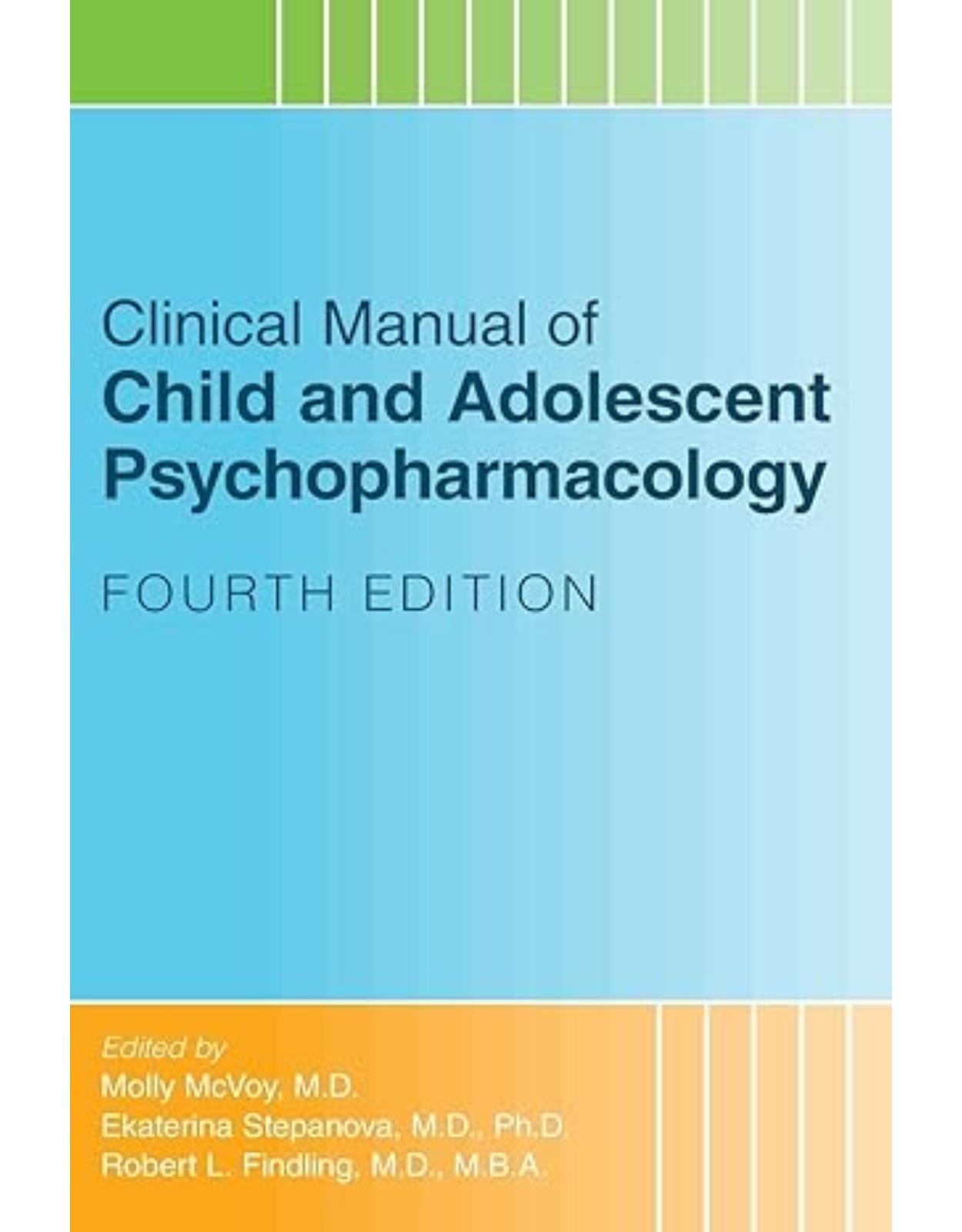
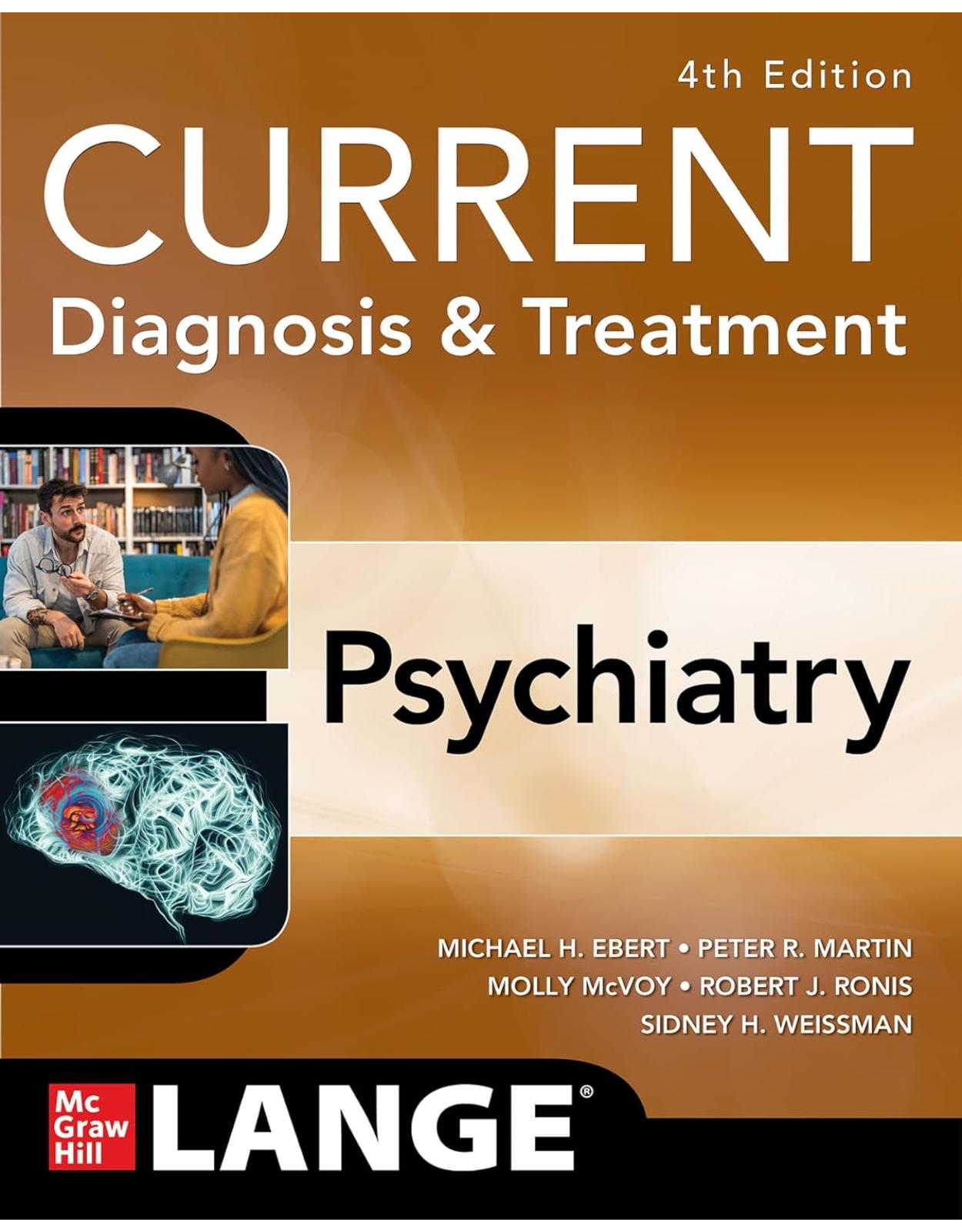
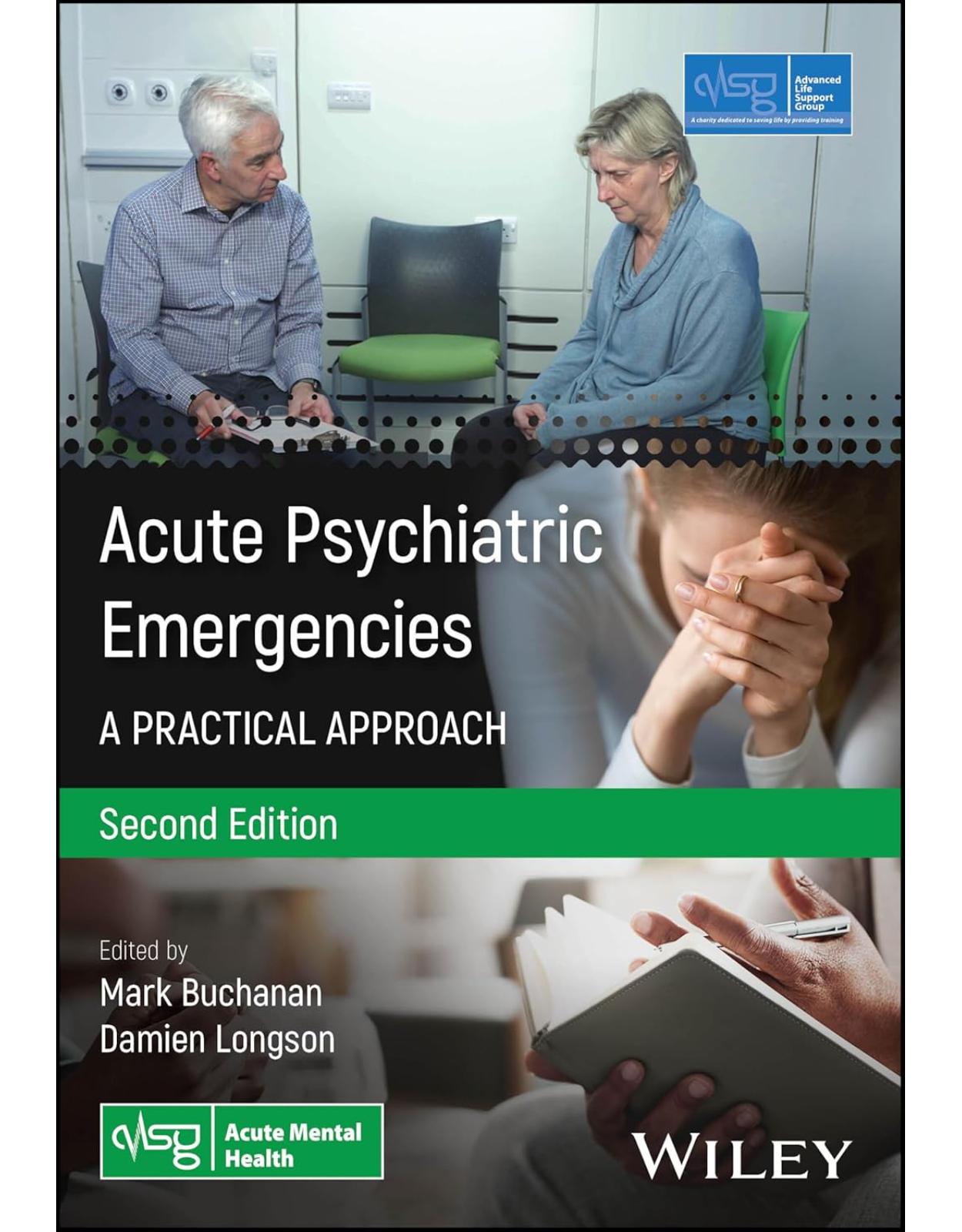
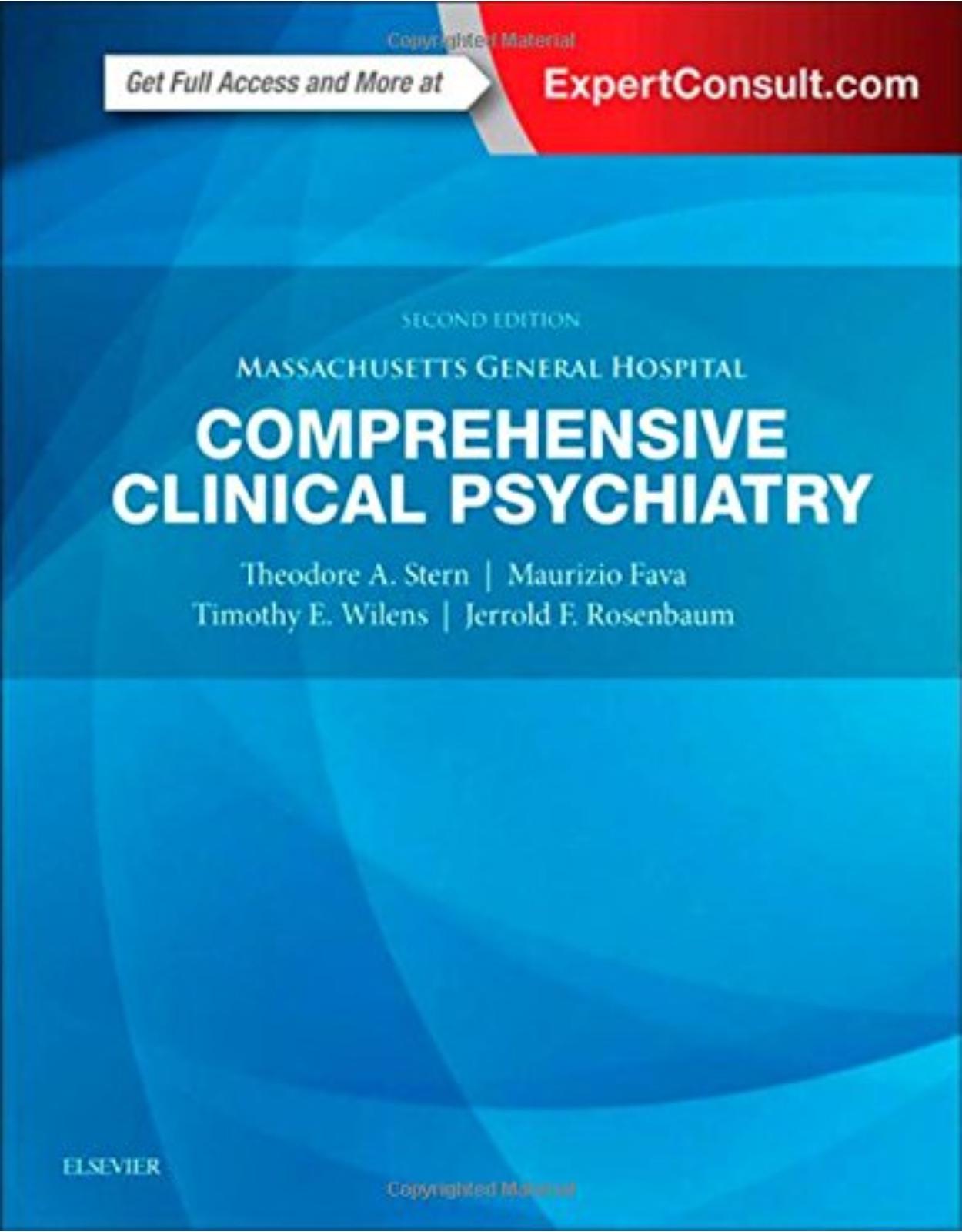
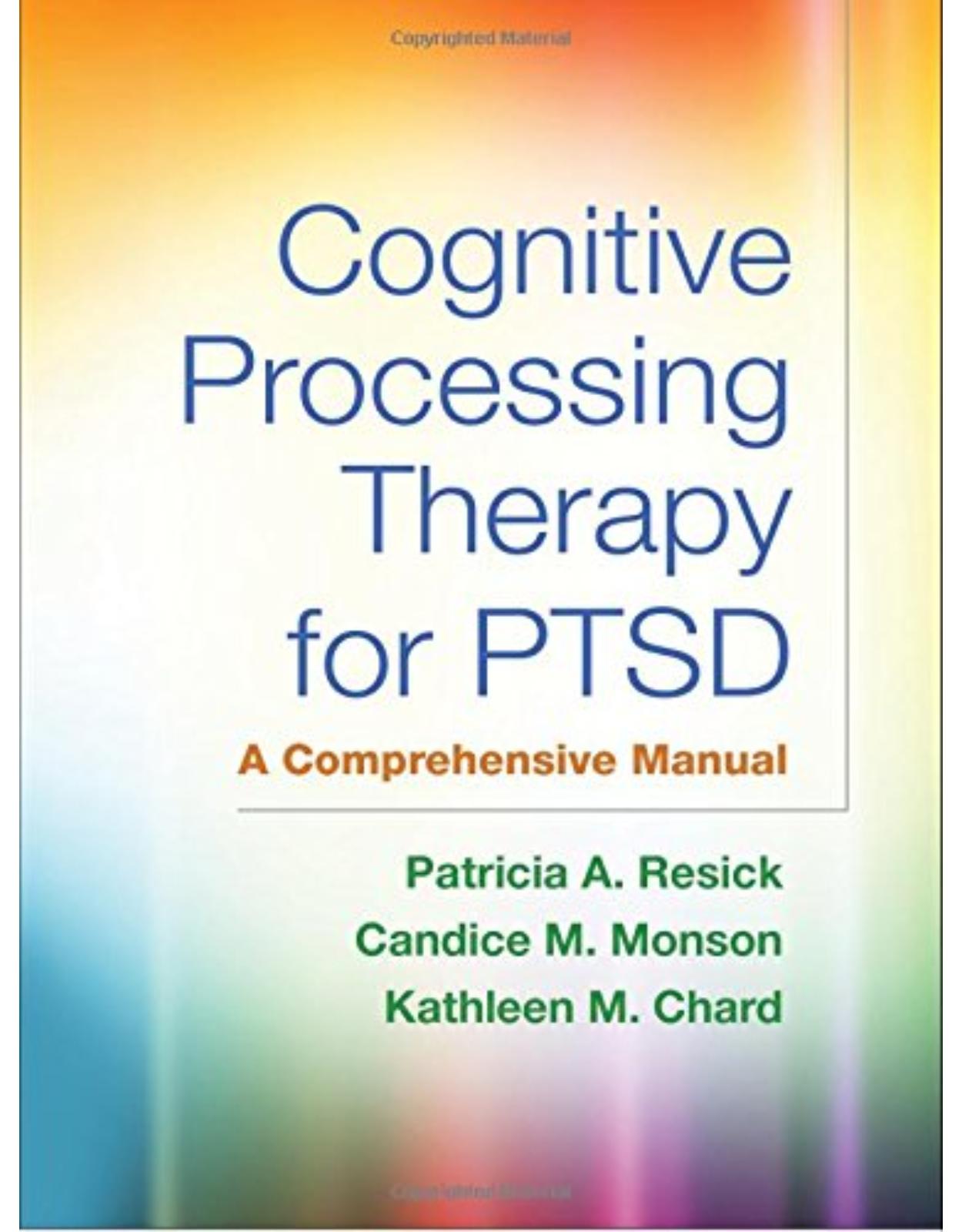
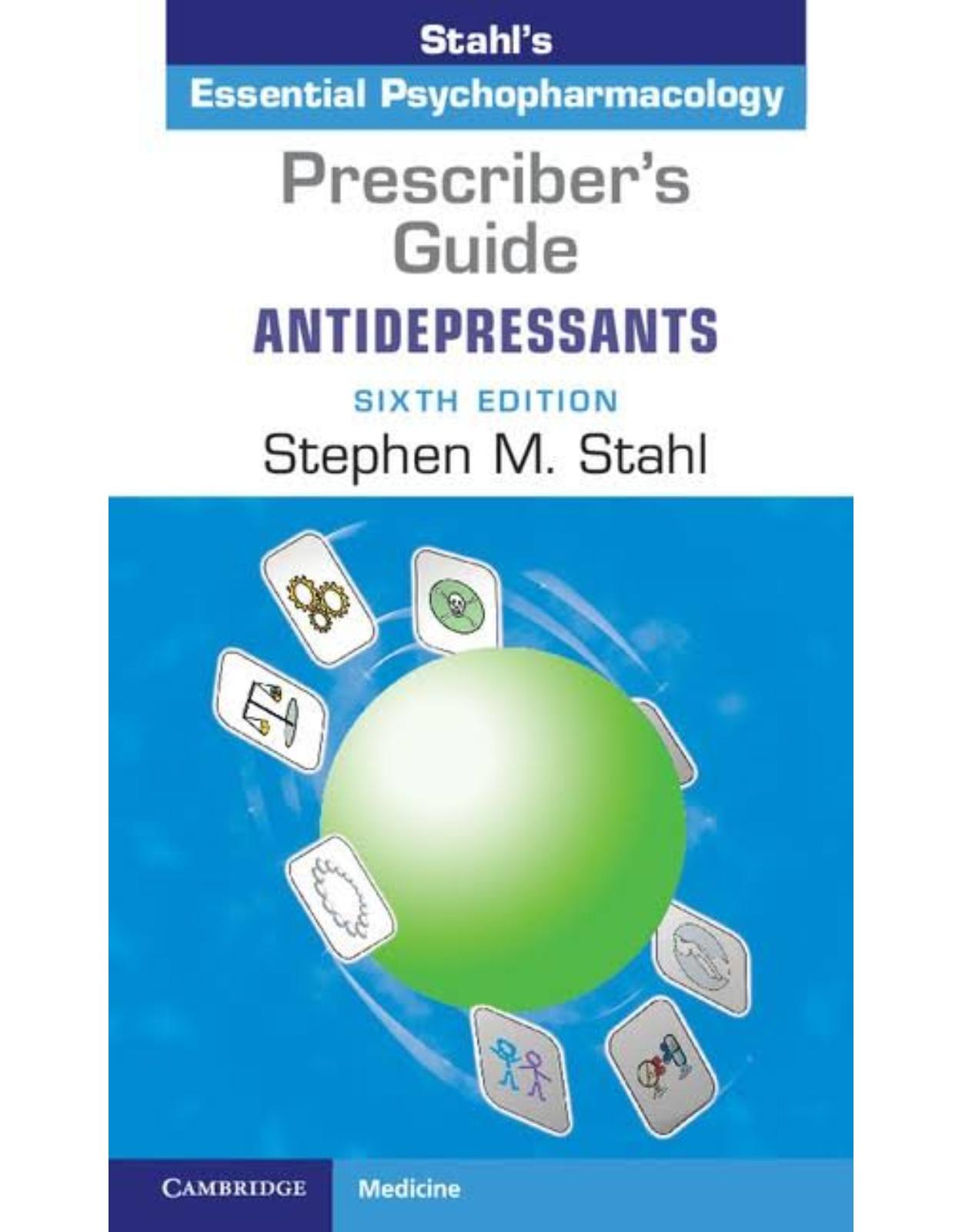
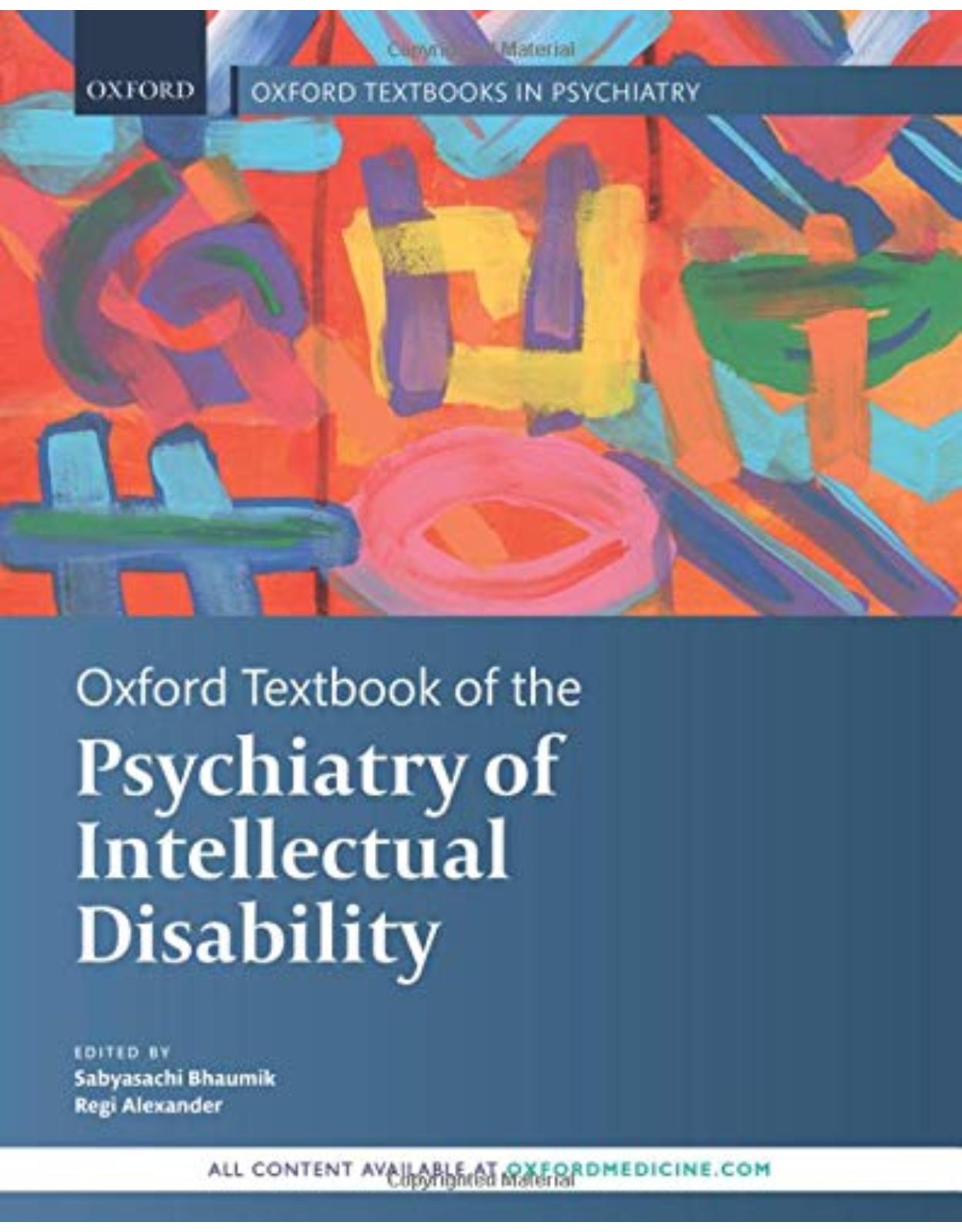
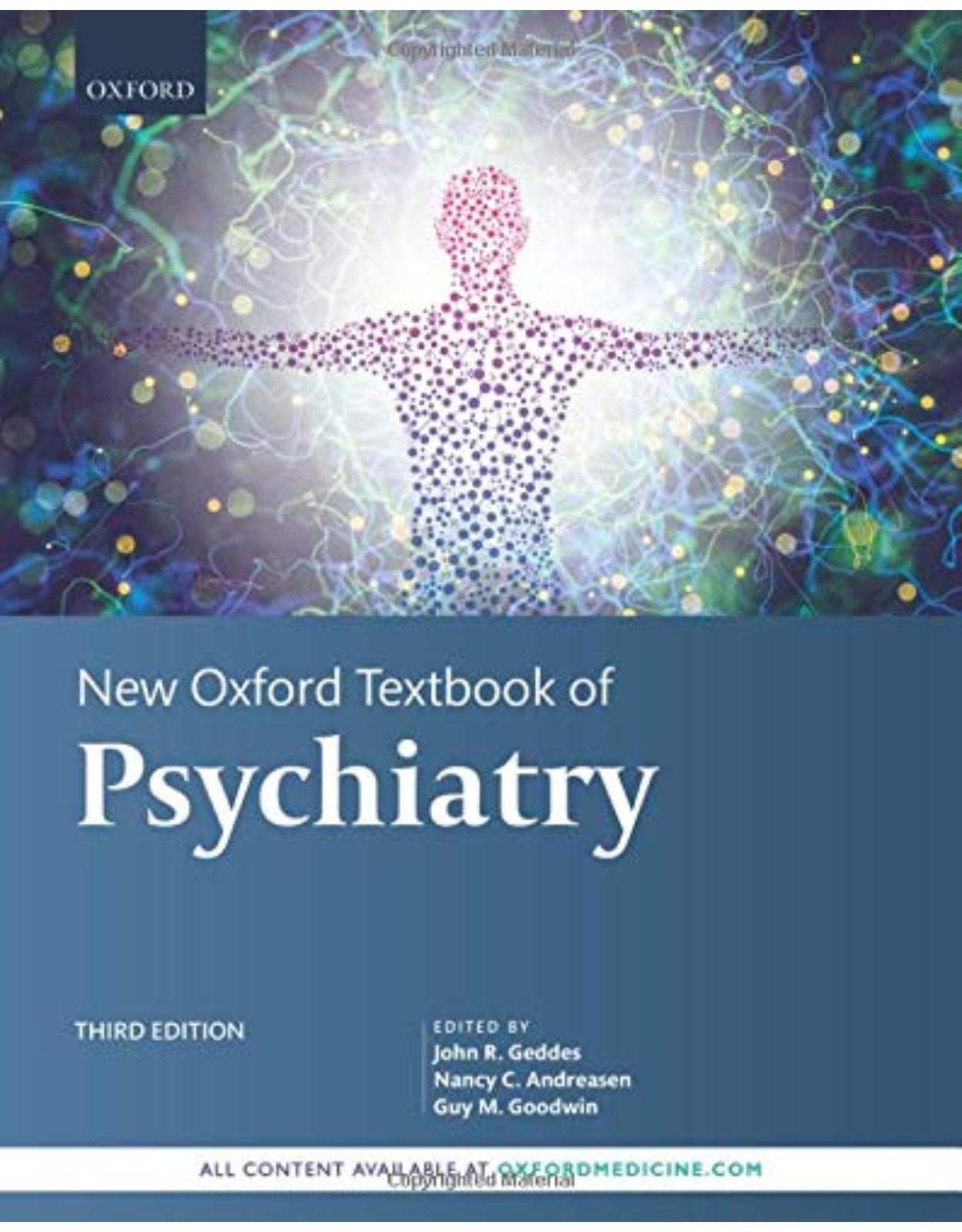
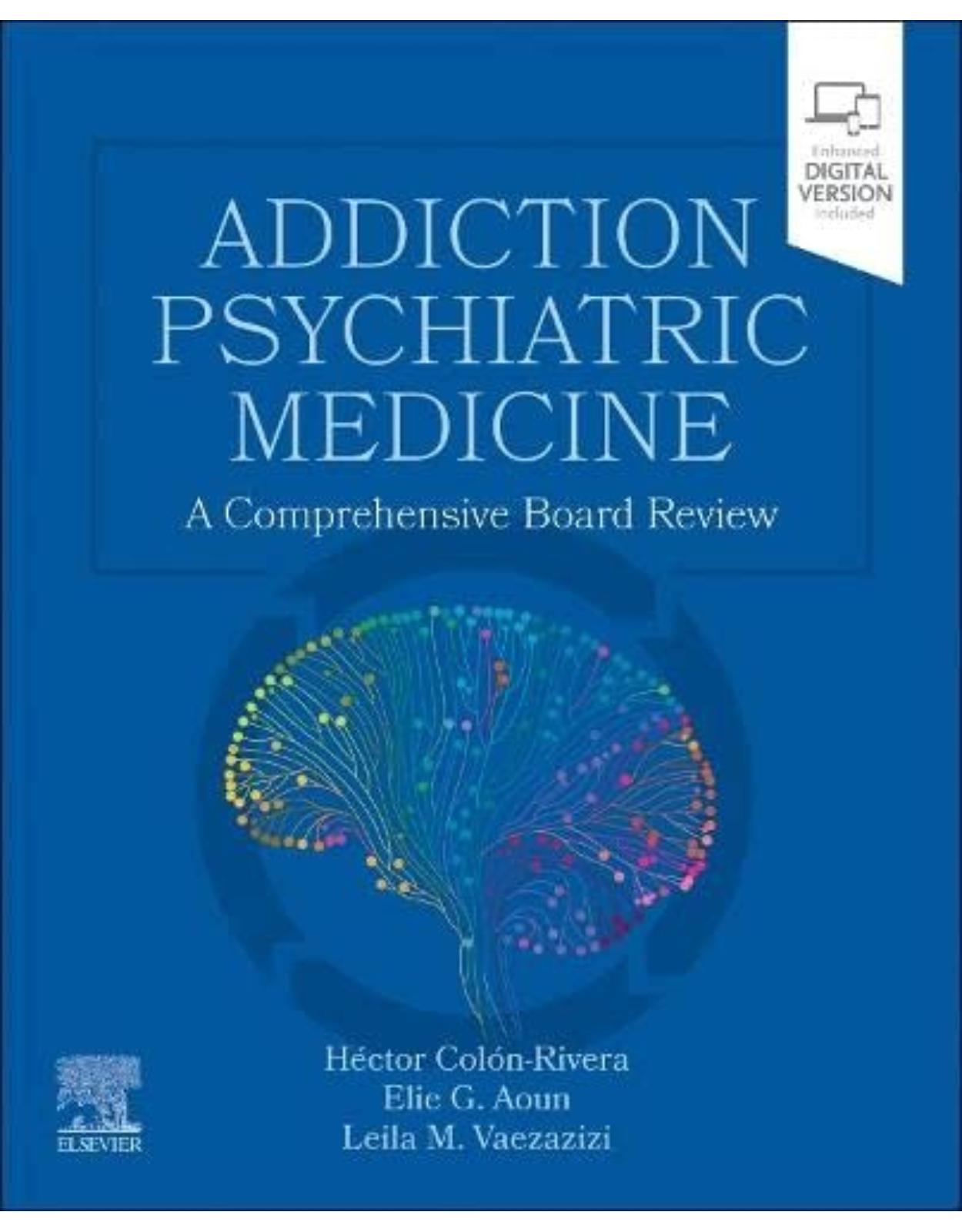
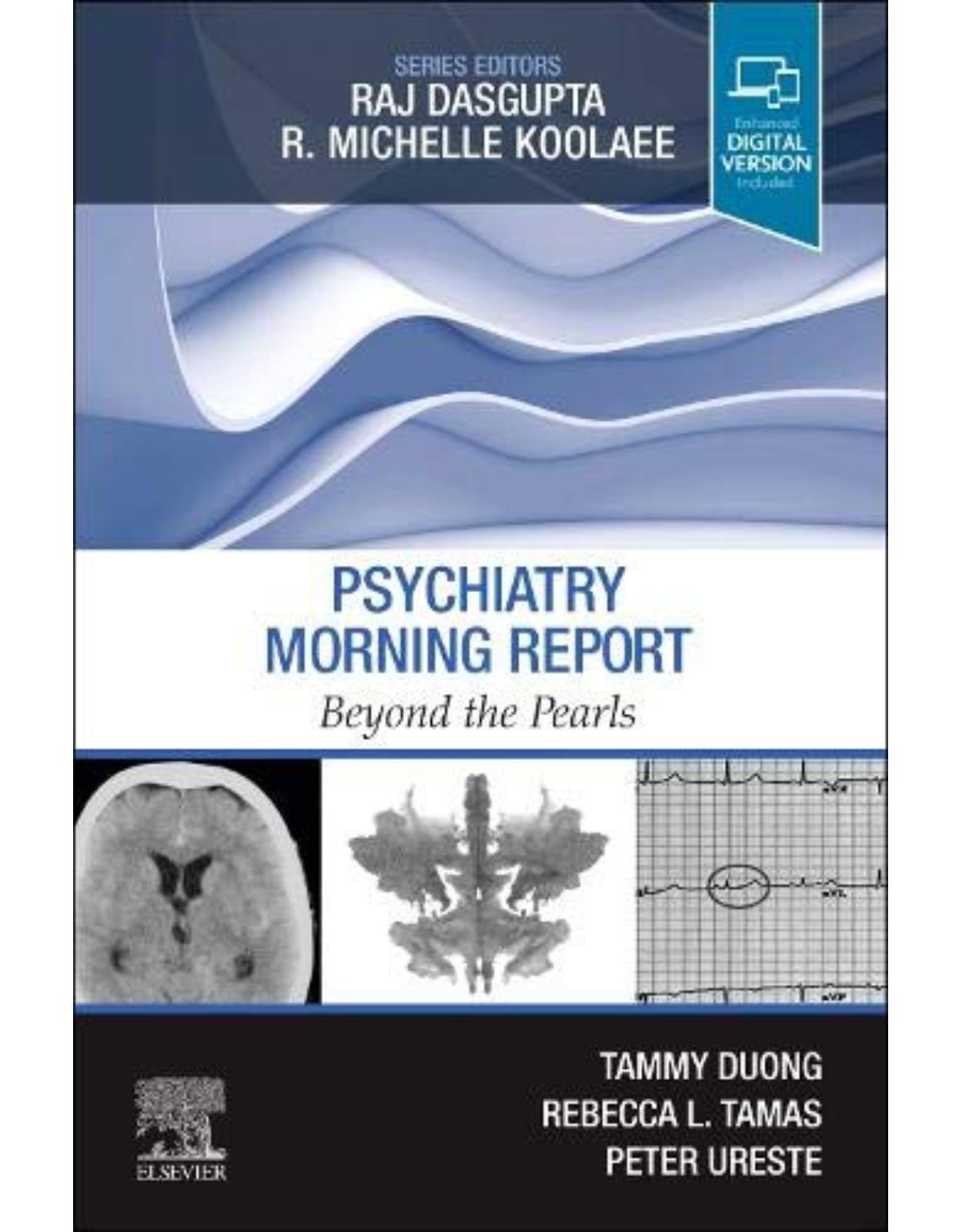
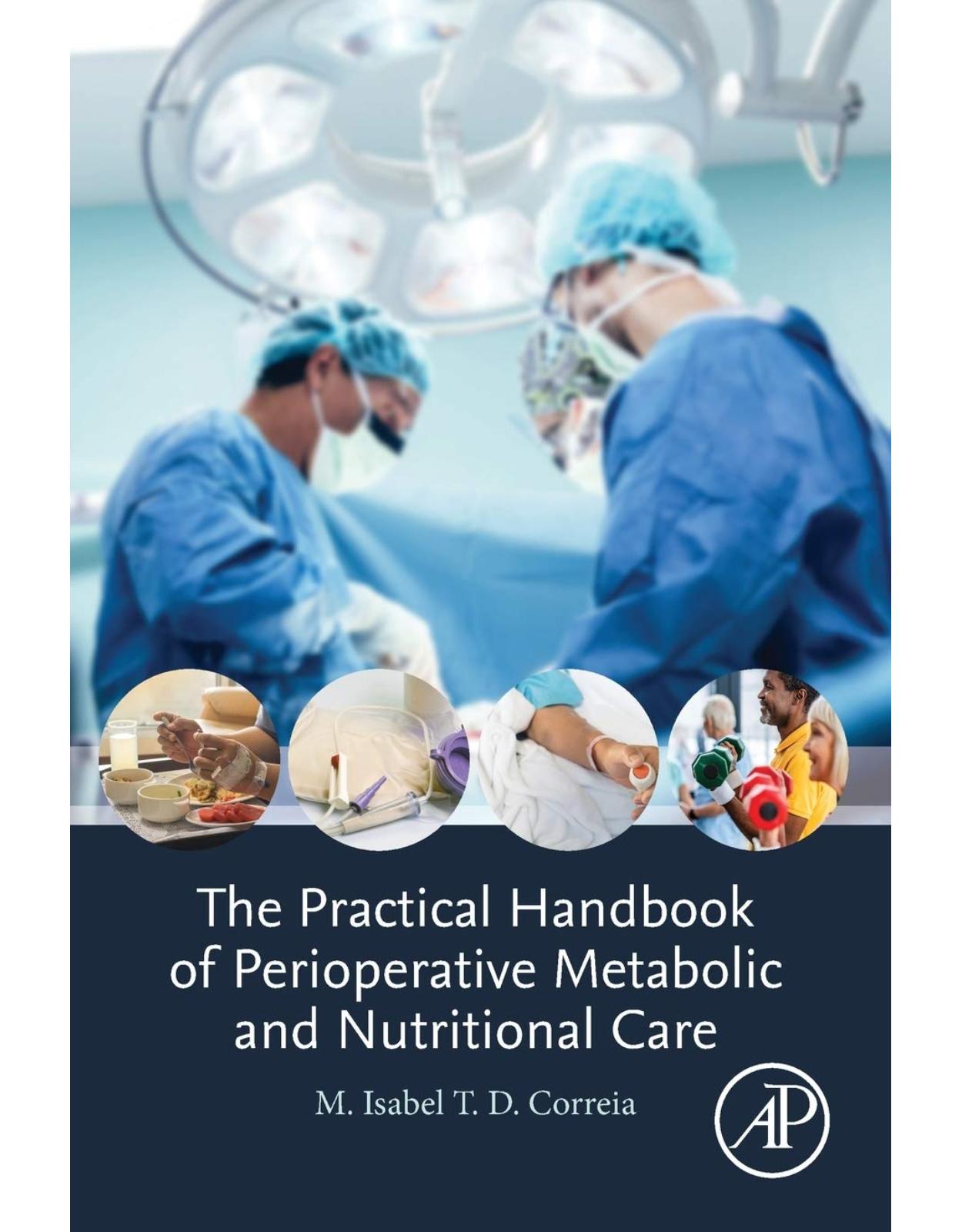
Clientii ebookshop.ro nu au adaugat inca opinii pentru acest produs. Fii primul care adauga o parere, folosind formularul de mai jos.